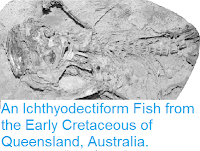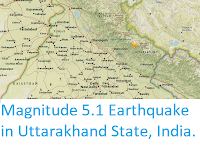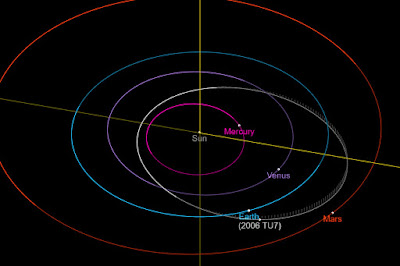The complex geological history of the Oriental region caused a high degree of geographical genetic structure within freshwater organisms and species, once considered widely distributed in this region, are often formed by distinct genetic lineages. The Bronze Featherback Fish Notopterus notopterus, currently the only valid species of the genus Notopterus, is one of such widely-distributed species, occurring from the Indus basin (Pakistan and India) in the west, to the Mekong region – slightly extending east to the Annamite Range – (Cambodia, Laos, Thailand and Vietnam) in the east and to Java (Indonesia) in the south. Intriguingly, Notopterus notopterus has not yet been recorded in Borneo where it is most likely absent. Specimens of Notopterus notopterus are identifiable from all other Oriental Freshwater Fish based on (amongst other features) their distinct tapered tail and the corners of their mouth below eye (not behind as in the other Oriental Notopterid genus Chitala. It is reported that this species reaches up to 60 cm in standard length. A wealth of data is available for this species, documenting its reproductive behaviour and embryonic development, cytogenetics, and phylogeography. However, none of these studies simultaneously examined specimens sampled across the whole distributional range of Notopterus notopterus.
In 2009 a group of scientists led by Jun Inoue of the Ocean Research Institute at University of Tokyo published a paper in the journal Molecular Phylogenetics and Evolution, which reconstructed the molecular phylogeny of the family Notopteridae to discuss its evolution and biogeography. These authors sequenced the complete mitogenomes of two specimens of Notopterus notopterus, one from India and the other from Thailand. The comparison of these two mitogenomic sequences revealed that these two specimens diverged from each other about 25 million years ago. This result was unexpected because no consistent morphological variation was previously reported within this species.
In a paper published in the journal Zoosystematics and Evolution on 1 July 2020, Sébastien Lavoué of the School of Biological Sciences at the Universiti Sains Malaysia, Siti Zafirah Ghazali, also of the School of Biological Sciences at the Universiti Sains Malaysia, and of the Institute of Marine Biotechnology at the Universiti Malaysia Terengganu, Jamsari Amirul Firdaus Jamaluddin, again of the School of Biological Sciences at the Universiti Sains Malaysia, Siti Azizah Mohd Nor, again of the Institute of Marine Biotechnology at the Universiti Malaysia Terengganu, and Khaironizam Zain, once again of the School of Biological Sciences at the Universiti Sains Malaysia, present the results of a study which investigated the genetic diversity within the genus Notopterus across its full range, for which, they analysed a dataset comprising 72 publicly available sequences of the standard barcoding fragment (655 base pairs) of the cytochrome oxidase I gene that were determined from specimens of Notopterus with precise information on their geographical collection plus two cytochrome oxidase I sequences extracted from two complete mitogenomes from two specimens of Notopterus without precise localities and four sequences Lavoué et al. newly determined from specimens collected in Peninsular Malaysia.
Haplotypes of Notopterus segregate into two main groups having distinct distributions. The first group includes all haplotypes from India and Bangladesh (South Asia group). The second group includes all haplotypes from Peninsular Malaysia, Thailand (Mekong River), Indonesia (Sumatra and Java) and Myanmar (Lake Inle, Salween basin) (Southeast Asia group). These two main groups diverge by 7.5% p-genetic distance that represents, on average, 45 differences between any combination of two specimens sampled from different groups. In contrast, each of these two groups is genetically uniform with intra-group differentiation that does not exceed 1% (within the South Asia group, mean p-distance equals 0.4%; and within the Southeast Asia group, mean p-distance equals 1%). This represents six nucleotide differences on average within the Southeast Asian group and only two nucleotide differences on average within the South Asian group. Furthermore, the two specimens examined by Inoue et al. (2009) fell in their corresponding geographic origin groups.
The minimal genetic distance separating the genus Notopterus into two main groups is well above 3% (using cytochrome oxidase I marker) which is considered as a conservative threshold between population and species levels in Vertebrates. Furthermore, the existence of a so-called barcode gap between these two groups, along with the fixation of more than 40 diagnostic nucleotide changes in cytochrome oxidase I, strongly indicate that Notopterus is formed by two species. One species is distributed in South Asia (from the Indus basin to Ganga-Brahmaputra basin) and the other in Southeast Asia (from the Salween basin to Mekong basin plus Malay Peninsula, Sumatra and Java).
(A) Map covering the Oriental biogeographic region and showing the distribution of localities (black and red circles) of specimens of Notopterus examined. Black star indicates the estimated type locality of Notopterus notopterus in Java (i.e. Jakarta region) and red stars indicate the likely origin localities of the two syntypes of Notopterus synurus (i.e. coast of Malabar and Coromandel coast at Tharangambadi, formerly Tranquebar). Main Oriental river basins from West to East: (1) Indus basin; (2) Ganga-Brahmaputra river system; (3) Irrawaddy basin; (4) Salween basin, (5) Mekong basin. Insert shows the left lateral view of a specimen of Notopterus notopterus (Penang State, west Peninsular Malaysia; 20 cm in standard length, voucher specimen number USMFC (3) 00002, NO_1). (B) Unrooted network constructed with the software PopArt and a median-joining algorithm showing the cytochrome oxidase I haplotype relationships within the genus Notopterus. Branch lengths are not proportional to the number of changes. Red circles indicated haplotypes of Notopterus synurus (South Asia) and black circles indicated haplotypes of Notopterus notopterus (Southeast Asia). Lavoué et al. (2020).
A 1992 study by Tyson Roberts of the California Academy of Sciences examined the variation of several meristic characters of Notopterus notopterus throughout its entire range. He did not report any significant intraspecific variability that could be additional evidence for the recognition of more than one species in the genus Notopterus. The low amount of morphological variability within the genus Notopterus, however, is not surprising given that the family Notopteridae is known for its morphological stasis. Several valid species of Notopteridae are morphologically similar. For example, species of the genus Chitala are only distinguishable based on their colour pattern and more than one species is suspected to occur within Chitala lopis.
Lavoué et al.'s cytochrome oxidase I-based results strongly support the presence of two allopatric species of Notopterus which need names. There are several nominal species of Notopterus which have been described from Southeast Asia and South Asia and several of these names are available. To determine which name should be applied to each of our two species, Lavoué et al. examined synonym lists and checked the date of description and type locality of these synonyms.
Notopterus notopterus was described and illustrated by Peter Pallas in 1769 as Gymnotus notopterus from a specimen said to have been collected nearby Ambon (Ambon Island), in the Indian Ocean, a region where this species has never been recorded since. More recent studies have suggested that the type locality given in the description of Pallas is an error because this species does not occur on the Island of Ambon which lies east of the Wallace Line, in a different biogeographical region. Furthermore, the local vernacular name of this species 'Ikan Pangaio', reported by Pallas, is in the Malay language which was not used in Ambon at that time. For these reasons, ichthyologist Maurice Kottelat has suggested that the specimen used by Pallas for the description of Notopterus notopterus should have been collected in Java where the Dutch established their main colony in Indonesia. Consequently, the name Notopterus notopterus should be retained for the species occurring in Southeast Asia with Java as its type locality. There is no type specimen known.
Marcus Bloch and Johann Schnieder described Clupea synura in 1801 from two syntypes, a name which was soon considered as a junior synonym of Notopterus notopterus. Bloch and Schneider first indicated that these specimens are from the coast of Malabar, India. However, in a following remark signed only by Johann Schneider, China and Tranquebar (now known as Tharangambadi, India) were listed as the localities of the syntypes. Notopterus, however, does not seem to occur in China, and zoologist Hans-Joachim Paepke found convincing explanations why Schneider could have mistaken China with the coast of Malabar, India. According to Paepke, the localities of the dry right skins of the two syntypes of Clupea synura that are housed in the Berlin Museum under catalogue numbers ZMB 8806 and ZMB 32057 are coast of Malabar and Tranquebar, respectively. Lavoué et al. suggest the revalidation of Clupea synura for the species of Notopterus occurring in South Asia which should be recognised as Notopterus synurus.
Whereas the genetic evidence presented in Lavoué et al.'s work supports the recognition of two valid living species of Notopterus, a detailed morphological comparison of the two species is lacking. Such morphological study is needed to identify possible diagnostic characters (in addition to the molecular diagnostic characters presented by Lavoué et al.) and to document the early diversification of the genus Notopterus in the Orient. In this respect, a fossil of Notopterus, morphological similar to living species, indicates that this genus was already present in Sumatra at least 33 million years ago (the Eocene-Oligocene boundary). In addition, because of the cryptic diversity occurring in the genus Notopterus and the difficulty to identify the type localities of species of this genus, it will be important to designate a neotype for Notopterus notopterus and a lectotype for Notopterus synurus. Finally, the geographic coverage needs to be expanded with the study of specimens collected from the Mekong basin, Indus basin and, especially, from the region comprising the Irrawaddy basin situated between the Ganga-Brahmaputra river system and the Salween basin to determine the location of the exact distributional limit between these two species.
See also...
Follow Sciency Thoughts on Facebook.


































